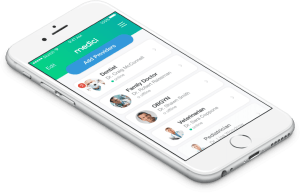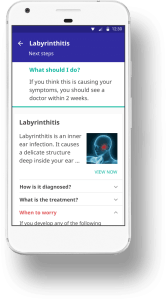
Telehealth, or the provision of healthcare via telecommunication networks, is gradually becoming a hot suite of technologies in health systems around the world.
Even the notoriously difficult-to-penetrate National Health Service in the UK has recently rolled out the Babylon telehealth platform at a primary care facility in London.
The latest industry statistics suggest that it’s a sector that is going to grow from $26.5 billion today to over $41 billion by 2021. Approximately 7 million patients will be engaged with via telehealth technologies around the world this year.
Key Advantages of Telehealth
Telehealth lowers healthcare costs, which can lead to major savings for patients and healthcare providers alike.
In 2015, a UC Davis study found that telehealth platforms can deliver financial savings of $4,662 per use, even when the cost of installation and system maintenance are factored in. What’s more, these savings were calculated using just five conditions — dehydration, asthma, bronchiolitis, fever and pneumonia — so the true savings could be much higher.
Studies show that telehealth platforms can deliver financial savings of $4,662 per use for healthcare providers. Click To TweetAdditional benefits for patients in particular include wider and higher quality coverage. Telehealth can significantly increase coverage, especially in rural areas where it is more difficult to reach healthcare services.
Types of Telehealth
Video link-ups are the most common form of telehealth, but there are a number of different forms of telehealth in operation today that provide a range of benefits, from increased service to more accurate diagnoses.
Store and Forward
Arguably the original form of telehealth technology was store and forward. This is essentially the transmission of medical images and information between healthcare providers. You might get a scan done or a test performed, and those results will be sent to another healthcare professional via telehealth networks.
The modern incarnation of such networks allows patients to easily gain a second opinion from a network of doctors around the world. Services such as CrowdMed and Diagnose.Me are leaders in the field.
Telehealth is expected to be worth more than $41 billion by 2021. Click To TweetRemote Patient Monitoring
There are a growing number of devices and applications that allow medical staff to monitor patient vital signs remotely. Whether it’s recording blood glucose levels, dietary intake or mental health diaries, a wide range of tools exist to help patients keep their medical team up to date.
This allows clinicians to detect potential problems much sooner, which both keeps patients well for longer and also increases the success-rate of treatments when they become ill.
Real-Time Video Communication
This is without doubt the most common form of telehealth today and involves a live video link between doctor and patient. The latest platforms, such as Babylon Health, feature AI-based triaging systems to check symptoms and recommend suitable courses of action.

Such systems have held up well in clinical testing, but they are still relatively rare in primary care facilities. Platforms such as Medici show the potential, however, and their technology was recently rolled out across the U.S.
Some platforms are augmenting the standard video linkup with remote testing capabilities. For instance, TytoCare provide tools that allow the user to examine their ears, throat, skin, heart, lungs and temperature, thus bridging a significant gap in the telehealth offering by not requiring a professional to physically perform examinations.
AI-Based Chatbots
An emerging form of telehealth is the AI-based chatbot that allows users to talk with an automated system and receive advice. The text interfaces use natural language processing to point users to the correct information.

An example of this in action is the chatbot developed by Your.MD that helps to connect patients to the care they need around the clock.
Or you’ve got 911bot, which is designed to help during emergency situations. The system, which integrates with Facebook Messenger, allows users to report accidents via text or image messages. The user is given advice on how to respond to the situation and their message is passed on to emergency services.
No Silver Bullet
Suffice to say, telehealth is still in its infancy, both in its technical development and in the way healthcare providers can integrate it into their existing offerings and workflows. It’s important not to get too carried away with early results and accept that the tech is still very much a work in progress.
The potential is certainly considerable, as startups continue to innovate new technologies and healthcare providers continue to test and explore new ways of integrating telehealth into their care plans.